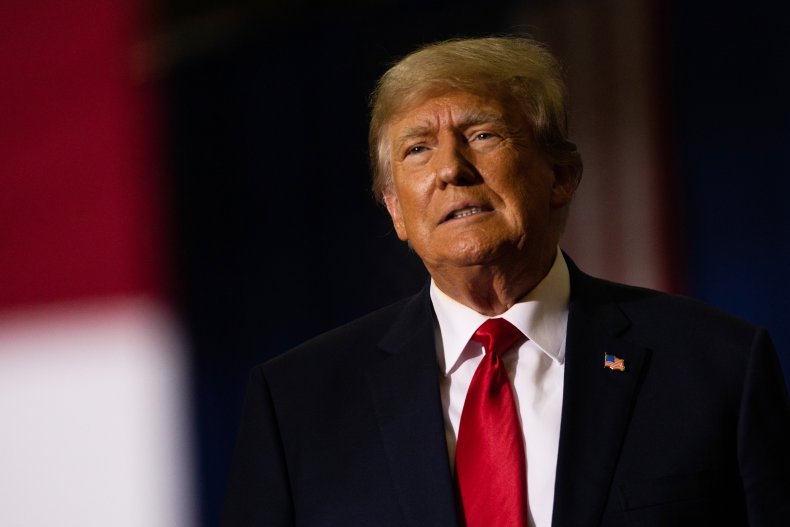Amid a possible indictment of former President Donald Trump, several fake photos of the former president being arrested have circulated on social media.
On Tuesday, Eliot Higgins, founder and creative director of Bellingcat, an investigate journalist website, posted an artificially created photo of Trump being taken into custody by police. In a series of other posts, Higgins published fake photos generated by artificial intelligence (AI) of Trump and his family members arguing with police, as well as one showing the former president in a jail cell.
The artificially created photos come as Trump is expected to be indicted by the Manhattan District Attorney’s Office in its investigation of hush money payments made to Stormy Daniels, an adult-film star. In a Truth Social post over the weekend, Trump said that he expected to be arrested on Tuesday and called for protests in response.
Henry Ajder, expert in the field of artificial intelligence, deep fake photos and synthetic media, told Newsweek on Tuesday that while the photos of Trump may be noticeably fake to individuals with a background in AI, others may perceive the photos differently.

Emily Elconin/Getty
“Not everyone is up to speed on how quickly the generative AI and deep fake space is evolving,” Ajder told Newsweek. “Outside of the context of Eliot Higgins tweet, this image could be shared in much more siloed and narrow information spaces, where it is framed differently by people who are looking for validation and essentially looking for outputs, images, or pieces of media that do indeed show [Trump] being arrested to spark outrage or joy in some cases.”
Ajder also explained that posting these photos on social media, where people are likely swiping through timelines quickly, you may not notice that the photo is artificially generated.
“If you have the kind of perfect storm of people who aren’t familiar with the landscape of AI-generated content and it’s being shared in a context where it either validates a view they have or bias they have, it still could potentially fool people,” Ajder said.
Chris Meserole, director of the AI & Emerging Tech Initiative at the Brookings Institution, also told Newsweek that “the deepfake images of former President Trump being arrested were not intended to convince anyone that he had in fact been arrested, given how easy a fact like that is to verify.”
“There’s been a lot of panic lately about how deepfakes might fool people into believing things that are not true. But as the Trump deepfakes illustrate, the most pernicious use of deepfakes may be to prey on our worst tribal impulses, political or otherwise,” Meserole told Newsweek.
In a report published by Brookings in January, Meserole and other experts in the AI space warned that “for policymakers and officials in democratic states, deepfakes pose a particularly difficult challenge.”
European law enforcement agency Europol published a report last year, saying: “Experts estimate that as much as 90% of online content may be synthetically generated by 2026.”
Ajder also told Newsweek that the expansion of AI technology is “unfortunate” and “exciting.”
“In the disinformation or misinformation space, there’s a huge amount of room for improvement on these outlets that could make them much more potent and much more dangerous,” he said.
Newsweek has reached out to Trump’s spokesperson via email for comment.
Stay connected with us on social media platform for instant update click here to join our Twitter, & Facebook
We are now on Telegram. Click here to join our channel (@TechiUpdate) and stay updated with the latest Technology headlines.
For all the latest For Top Stories News Click Here
